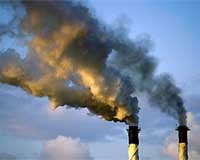| . |  |
. |
Seattle WA (SPX) May 18, 2009 There has been sharp disagreement in recent years about how much, or even whether, winter snowpack has declined in the Cascade Mountains of Washington and Oregon during the last half-century. But new research leaves little doubt that a warmer climate has a significant effect on the snowpack, as measured by water content on April 1, even if other factors keep year-to-year measurements close to normal for a period of years. Water content can vary greatly depending on temperature and other conditions at the time of snowfall. Typically an inch of snow at temperatures near freezing will contain significantly more water than an inch of snow a colder temperatures. "All things being equal, if you make it 1 degree Celsius warmer, then 20 percent of the snowpack goes away for the central Puget Sound basin, the area we looked at," said Joseph Casola, a University of Washington doctoral student in atmospheric sciences. That means that even in years with normal or above-normal snowfall, the snowfall probably would have been even greater except for climate warming. The finding has implications for various water-dependent resources, including drinking water supplies, fisheries, irrigation and hydropower, and it could be applicable to other areas of the Cascades in the Pacific Northwest. Annual snowfall variability makes it difficult to plot a meaningful trend, Casola said. Starting in a year with high snow accumulation will imply a significant decrease over time, while starting in a year with average or low snow totals will imply little change or even an increase. So, for example, measuring from 1944 to 2005 shows just a slight decline in snowpack but changing the starting year to 1950 more than triples the decline. However, the measurements also show a slight increase in the last 30 years, a period of significant climate warming. That is probably because trend measurements include declines from climate warming as well as increases and decreases from other factors. For example, several of the lowest-snow winters in the Puget Sound area were during El Nino years, while many of the highest-snow winters were during La Nina years. Those two climate phenomena in the South Pacific can have significant impact on Northwest weather. Likewise, the amount of snow can be affected by a long-term climate cycle in the North Pacific called the Pacific Decadal Oscillation, which changes between positive and negative phases on the order of every 20 years. "Global warming can be reducing your snowpack over time, but other factors can mask the impact of the warming," Casola said. "Conversely, in a period of dry years global warming would tend to exacerbate the effects." The new research used four different methods to examine decades-long records of water contained in Cascades snowpack in the central Puget Sound basin on April 1 of each year. Scientists used simple geometry to estimate temperature sensitivity of snowpack, made detailed analysis of seasonal snowpack and temperature data, used a hydrological model to examine the data, and analyzed daily temperature and precipitation measurements to estimate water content of snowpack on April 1. "If you assume precipitation is the same every year and look at the effects of temperature alone, all the ways we examined the data converge at about a 20 percent decline in snowpack for each degree Celsius of temperature increase," said Casola. He is lead author of a paper detailing the work, part of his doctoral thesis, which is being published online May 14 in Journal of Climate, published by the American Meteorological Society. Co-authors, all from the UW, are Lan Cuo, Ben Livneh, Dennis Lettenmaier, Mark Stoelinga, Philip Mote and John M. Wallace. While there still is uncertainty in the trend data, people can expect to see lower spring snowpack more frequently in the future, with low-snow winters bringing low-flow summers, Casola said. Winter precipitation in the Cascades is likely to be similar to what is recorded now, but more of it will be rain. Casola notes that businesses, resource manager, utilities and irrigators increasingly accept the notion of climate change, and many try to incorporate the information into long-term plans. "Now they want to know, 'What does this mean for my operation?'" he said. "People are becoming more savvy to the issue of climate change. They want to be aware of changes that might be coming and to identify areas in their systems that perhaps need to be modified." Share This Article With Planet Earth
Related Links University of Washington Climate Science News - Modeling, Mitigation Adaptation
 US lawmakers formally unveil climate change bill
US lawmakers formally unveil climate change billWashington (AFP) May 15, 2009 Democrats in the US House of Representatives on Friday formally unveiled sweeping legislation to fight climate change and said the 932-page bill enjoyed broad national support. The House Energy and Commerce Committee will take up the measure on Monday and have legislation ready for a full House vote by the end of next week, the panel's chairman, Democratic Representative Henry Waxman, said ... read more |
|
| The content herein, unless otherwise known to be public domain, are Copyright 1995-2009 - SpaceDaily. AFP and UPI Wire Stories are copyright Agence France-Presse and United Press International. ESA Portal Reports are copyright European Space Agency. All NASA sourced material is public domain. Additional copyrights may apply in whole or part to other bona fide parties. Advertising does not imply endorsement,agreement or approval of any opinions, statements or information provided by SpaceDaily on any Web page published or hosted by SpaceDaily. Privacy Statement |